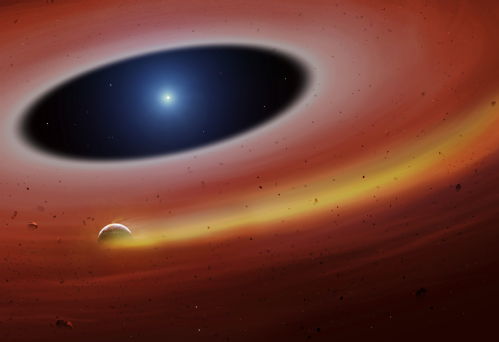Christopher Manser
I am an Imperial College Research Fellow based at Imperial College London.
Research
My research focuses on the study of remnant planetary systems around white dwarfs, which are left over from the main sequence lifetime of the white dwarf. These systems can be used to investigate the bulk composition of exo-planetary material as well as answer questions such as - "What will happen to our Solar System when the Sun runs out of fuel"
I have been investigating a subset of these systems which host a gaseous disc in addition to a dust disc and metal pollution of the white dwarf atmosphere. The gaseous discs are indicators of dynamic activity in the disc and can be used to better understand these complex systems.
|
|
An artist's impression of the planetesimal orbiting on a 2-hour period within the gaseous disc around SDSS J1228+1040 (by Mark Garlick). |
Recently, I led an international team that made the first spectroscopic discovery of a planetary body around a white dwarf, published in Science. I also produced the first image (see the left panel of the movie below) of the disc around SDSSJ1228+1040 (shown in an artist's impression above) using a method called Doppler tomography. The emission we see from this disc varies on a time-scale of decades, and can be well modelled as being generated from a fixed intensity pattern in the disc that is undergoing apsidal precession. As the disc precesses, we see different 'snapshots' of it in the form of emission profiles in the spectra (an example profile is shown in the right of the video below). In the same way that a CT scan works, we can take all of these snapshots and build an image of the system. The only difference is that the spectra give us velocity snapshots, so the image we make is in velocity space).
I am also a member of the DESI collaboration which is going to measure the effect of dark energy on the expansion of the universe. It will obtain optical spectra for tens of millions of galaxies and quasars, constructing a 3D map spanning the nearby universe to 11 billion light years. My role in this project is to include white dwarfs as flux standards to calibrate the spectra DESI will observe. This will mean that ~100,000 white dwarfs will be observed with DESI, increasing our sample size to find rare and exciting remnant planetary systems.
Popular science articles:
Curious kids: What would happen if the Sun exploded?
Publications


